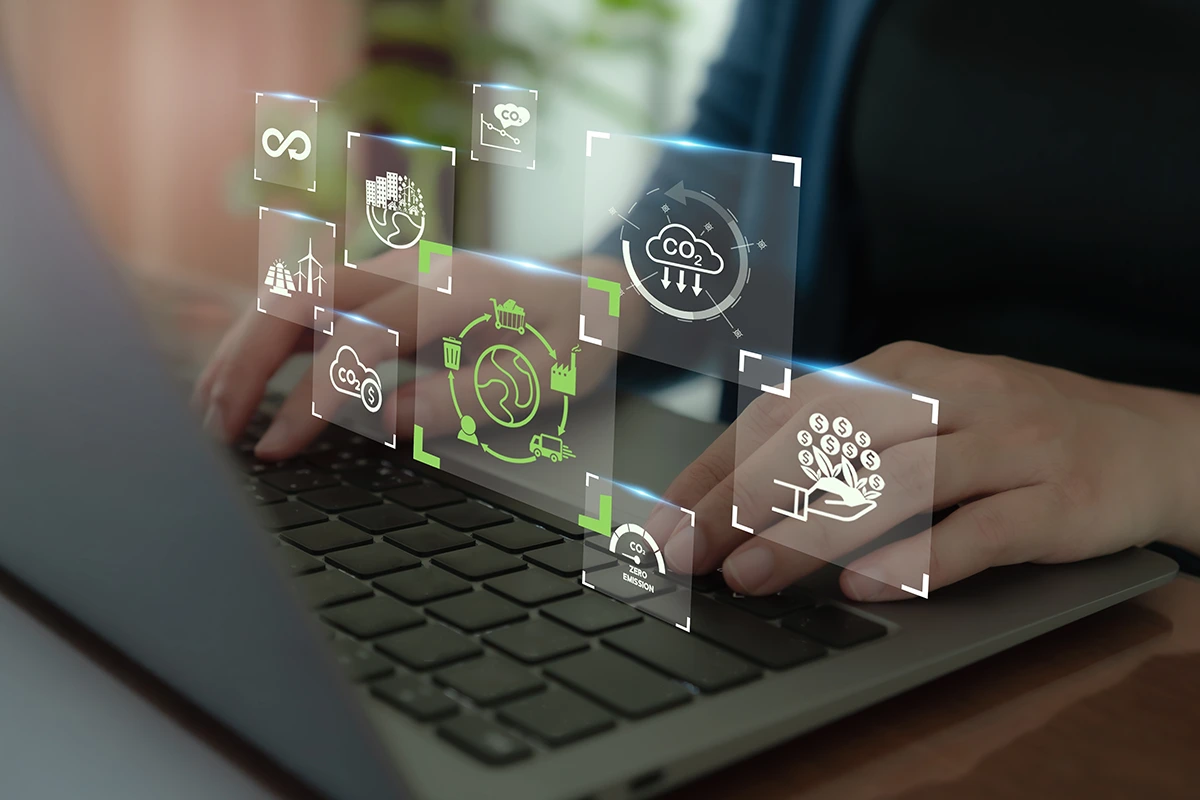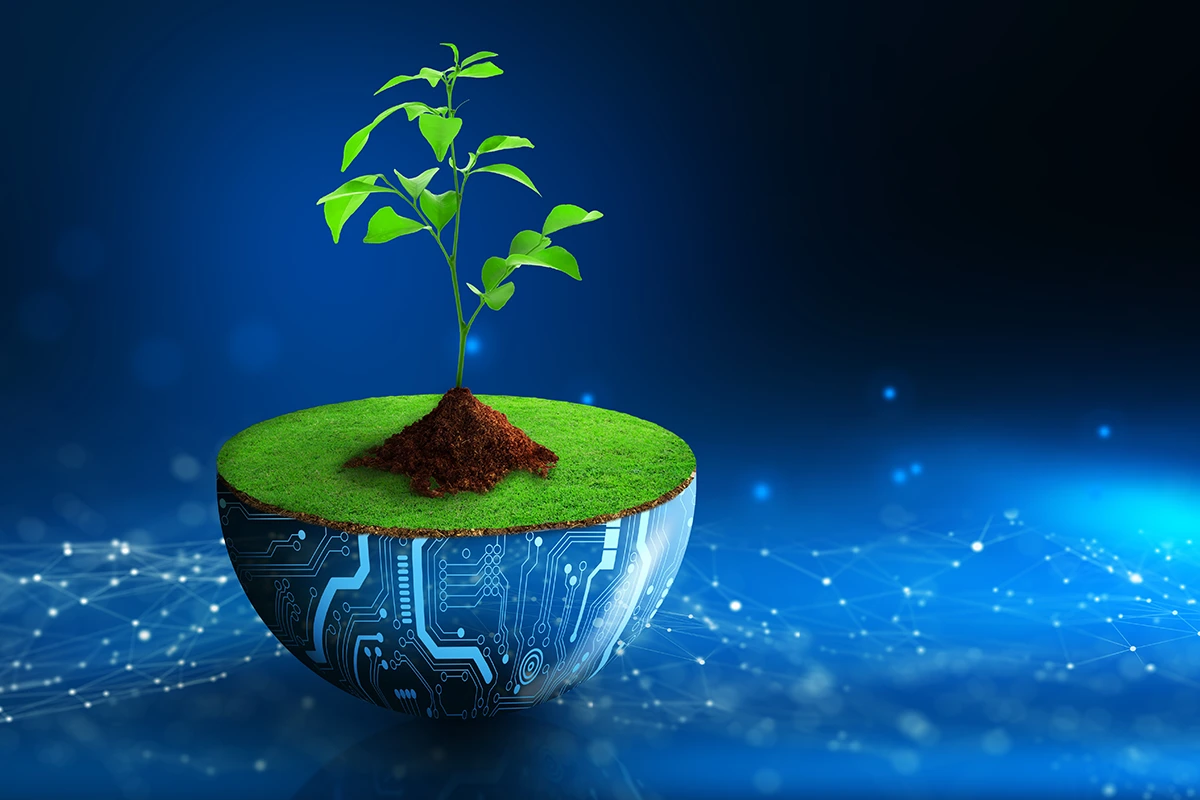Sustainable Product Lifecycle Design – Green Innovation Insights

In the journey towards a more sustainable future, the concept of „Design for Lifecycle Sustainability” has emerged as a key approach in product engineering. This method emphasizes the consideration of a product’s entire lifecycle to minimize environmental impact. In this blog post, we’ll explore how this approach aligns with the EcoDesign Directive, the role of Digital Product Passports (DPP), strategies for reducing CO2 emissions during production, and how EcoPLM solution supports these initiatives.
The Role of Digital Engineering in Sustainable Design
Digital engineering plays a crucial role in realizing the vision of co-friendly Product Lifecycle Planning. It involves the use of digital technologies to create, simulate, and test products in virtual environments, significantly reducing the need for physical prototypes. This approach not only streamlines the product development process but also minimizes waste and resource use, significantly reducing the environmental impact. By leveraging advanced digital tools, engineers can optimize product designs for sustainability from the outset, ensuring that environmental considerations are embedded at every stage of the product lifecycle. The integration of digital engineering techniques is fundamental in transforming traditional manufacturing processes into more sustainable practices.
What is the life cycle of sustainable design?
Sustainable design is based upon systems approaches and considerability across the product lifecycle. Inventors and manufacturers should consider the impacts of environmental factors during three critical stages: Supply Chain (sale, manufacturing and distribution processes), Use of product and End.
What is the life cycle sustainability?
LCSA is the assessment of all ecological costs, socioeconomic effects, costs and advantages in the design and production process in achieving sustainable product development throughout its life cycle.
The EcoDesign Directive and Its Impact
The EcoDesign Directive is an EU framework establishing ecological standards for energy-related products. It aims to improve environmental performance throughout their lifecycle, covering 26 product groups like lamps, insulation materials, and data processing units, significant contributors to greenhouse gas emissions. The directive has a proven track record of delivering benefits to businesses, clients, and the environment, saving consumers €120 billion in energy expenditures and reducing energy consumption of regulated products by 10% in 2021.
Digital Product Passport – A Gateway to Sustainable Products
Digital Product Passports are critical instruments for collecting and sharing product data throughout their lifecycle. They illustrate a product’s sustainability, environmental, and recyclability attributes. This initiative by the European Commission is part of a larger aim to introduce a circular economy model in the EU. DPPs provide detailed information about a product’s origin, material composition, repair, disassembly options, and recycling potential, empowering consumers, and supply chain actors with comprehensive product knowledge.
What is the timeline for the Digital Product Passport?
Batteries and electronics products are expected to comply with the DPP sometime in 2020, with clothing and electronic products followed shortly thereafter. Digital product passports are expected to require compliance in about 30 categories by 2026 to 2030 – a date when the implementation is expected.
Reducing CO2 Emissions at the Production Stage
Digital Product Passports are critical instruments for collecting and sharing essential product data throughout their lifecycle, enhancing product performance and underscoring the benefits of sustainable business practices. They illustrate a product’s sustainability, including its carbon footprint, environmental, and recyclability attributes. This initiative by the European Commission is part of a larger aim to introduce a circular economy model in the EU, aiming to reduce the carbon footprint and improve overall environmental performance. DPPs provide detailed information about a product’s origin, material composition, repair, disassembly options, and recycling potential, empowering consumers, and supply chain actors with comprehensive product knowledge and insights into the benefits of sustainable choices.
Reduce environmental footprint
Knowledge can be used to reduce our footprint. A LCA can help you identify key areas for impact so you know exactly what can be improved to reduce your footprint. LCA helps people in promoting resource efficiency, priority for sustainable actions, and creation and minimization of waste. An LCA will help you understand which resources were ineffectively utilized and identify potential opportunities for saving those resources whether it was through less water or finding a cheaper power source for your product.
What is meant by sustainable manufacturing?
Sustainable manufacturing means generating products by economically viable means that minimize environmental impacts while conserving electricity and natural resources. Sustainable manufacturing also increases the safety of employees, communities, materials and products.
Manufacturing and sustainability – minimizing negative environmental impacts
The relationship between manufacturing practices and sustainability is increasingly pivotal, especially from customers’ perspectives. Sustainable manufacturing goes beyond reducing greenhouse gases; it encompasses efficient resource utilization, minimizing waste, and enhancing product longevity through Sustainable Lifecycle Engineering. By adopting sustainable manufacturing practices, businesses not only contribute to environmental preservation but also enhance their operational efficiency, brand reputation, and offer customers valuable insights into their sustainable development practices. This shift towards sustainable production methods, which actively consider the carbon footprint, is not just a corporate responsibility, but a strategic business imperative in today’s eco-conscious market. Embracing these practices, supported by solutions like GreenPLM, companies can achieve a balance between economic growth and environmental stewardship, ensuring a sustainable future for both industry and the planet, while meeting the evolving expectations of customers.
LEARN MORE ABOUT SUSTAINABILITY
EcoPLM: Facilitating Sustainable Design and Production
Incorporating these sustainable practices and directives requires sophisticated management tools. This is where EcoPLM toolbox comes into play. EcoPLM (based on Thingworx) aids in the integration of sustainability considerations throughout the entire product lifecycle, supporting alignement with the Eco Design Directive and Digital Product Passport requirements. It supports companies in tracking and reducing their CO2 emissions during production, ensuring compliance with evolving environmental standards, and contributing to the global sustainability effort.
Design for lifecycle sustainability is not just a concept but a necessity in today’s environmentally conscious world. By adopting practices aligned with the EcoDesign Directive, utilizing Digital Product Passports, and employing technologies like CCS, industries can significantly reduce their environmental impact. With the support of GreenPLM toolbox, businesses can seamlessly integrate these practices into their operations, paving the way for a sustainable and profitable future.




